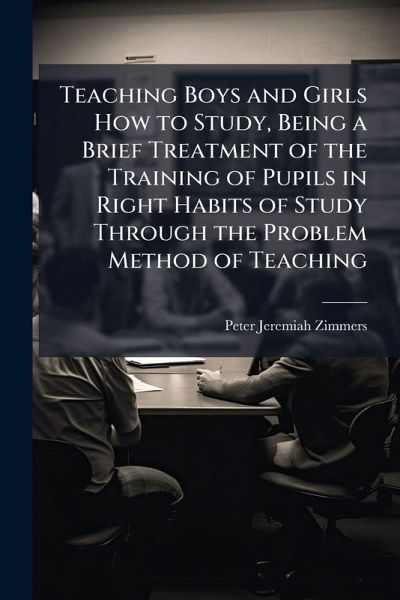
Teaching Boys and Girls How to Study, Being a Brief Treatment of the Training of Pupils in Right Habits of Study Through the Problem Method of Teaching
Versandkostenfrei!
Versandfertig in über 4 Wochen
15,99 €
inkl. MwSt.

PAYBACK Punkte
8 °P sammeln!
"Teaching Boys and Girls How to Study" by Peter Jeremiah Zimmers offers a glimpse into early 20th-century educational practices, specifically focusing on the cultivation of effective study habits in students. This concise work advocates for the 'problem method of teaching, ' emphasizing the importance of training pupils in correct study techniques. Zimmers' approach provides practical guidance for educators seeking to instill lifelong learning skills. While rooted in the educational philosophies of its time, the book raises enduring questions about pedagogy and the development of independent, ...
"Teaching Boys and Girls How to Study" by Peter Jeremiah Zimmers offers a glimpse into early 20th-century educational practices, specifically focusing on the cultivation of effective study habits in students. This concise work advocates for the 'problem method of teaching, ' emphasizing the importance of training pupils in correct study techniques. Zimmers' approach provides practical guidance for educators seeking to instill lifelong learning skills. While rooted in the educational philosophies of its time, the book raises enduring questions about pedagogy and the development of independent, resourceful students. It serves as a valuable resource for understanding the historical evolution of educational theory and practice. This work has been selected by scholars as being culturally important, and is part of the knowledge base of civilization as we know it. This work was reproduced from the original artifact, and remains as true to the original work as possible. Therefore, you will see the original copyright references, library stamps (as most of these works have been housed in our most important libraries around the world), and other notations in the work. This work is in the public domain in the United States of America, and possibly other nations. Within the United States, you may freely copy and distribute this work, as no entity (individual or corporate) has a copyright on the body of the work. As a reproduction of a historical artifact, this work may contain missing or blurred pages, poor pictures, errant marks, etc. Scholars believe, and we concur, that this work is important enough to be preserved, reproduced, and made generally available to the public. We appreciate your support of the preservation process, and thank you for being an important part of keeping this knowledge alive and relevant.


